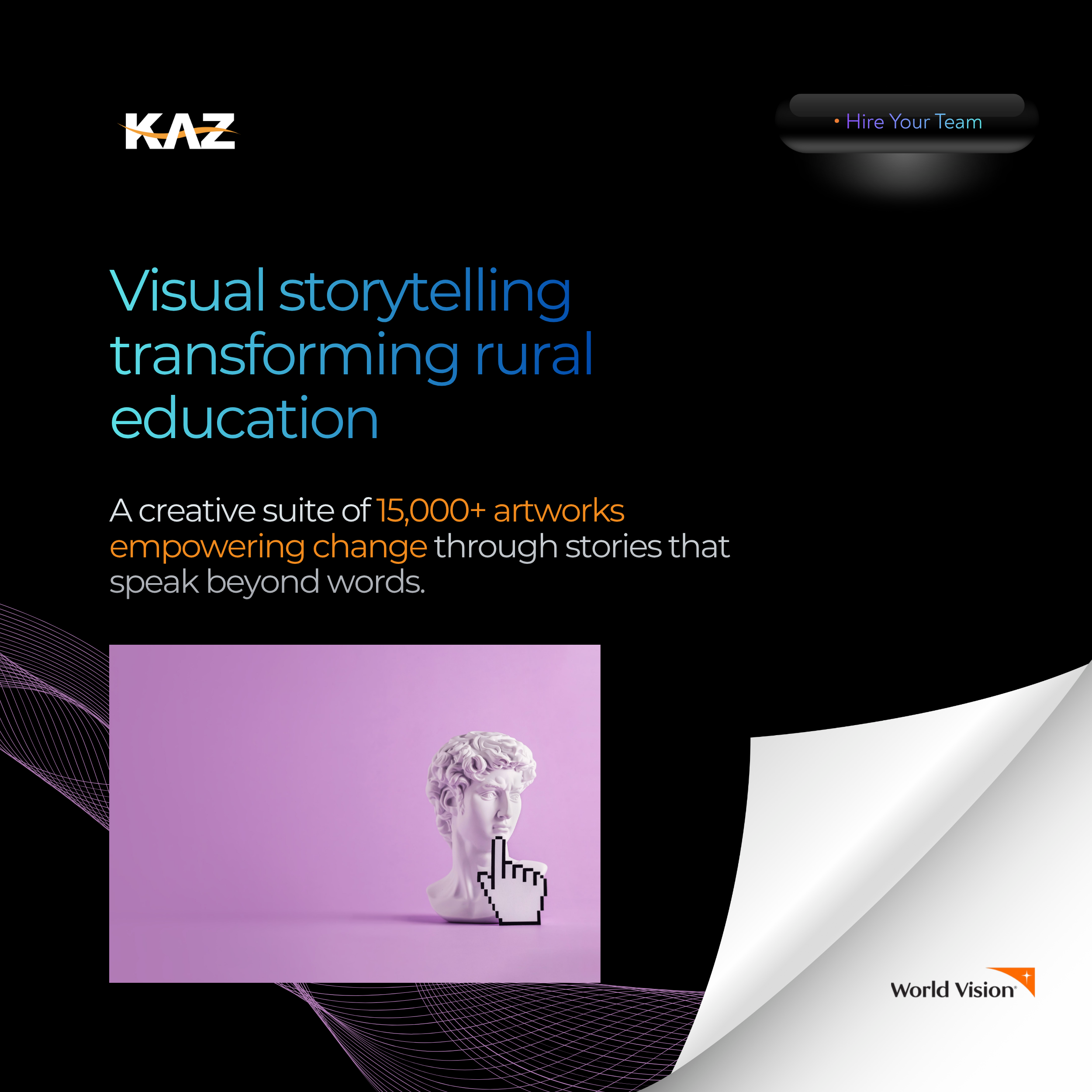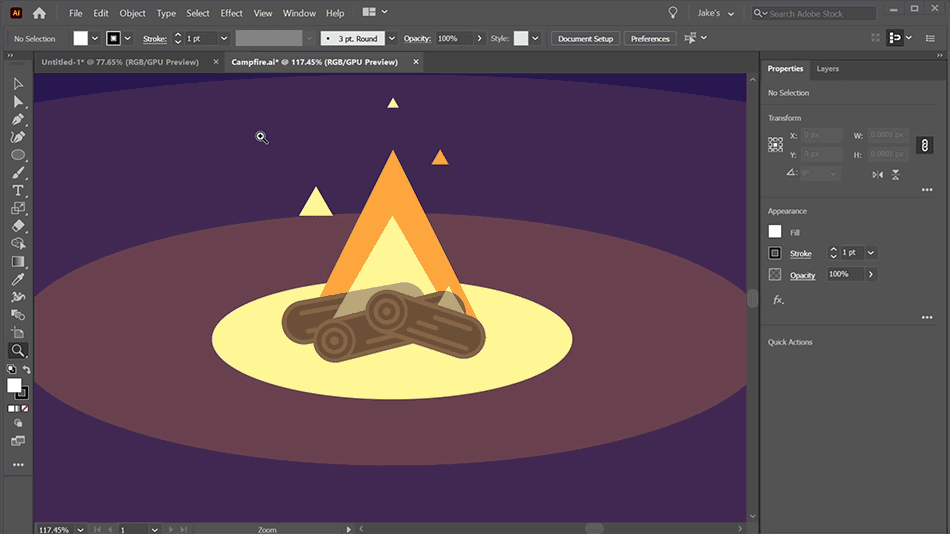Visual learning and communication tools for rural community development
/The Need
World Vision Bangladesh's livelihood and confidence-building programs for ultra-poor families faced a critical challenge in knowledge retention and behavior change. Traditional training methods relying on text-heavy materials and verbal instruction proved ineffective in rural communities where literacy levels vary, attention spans during long training sessions wane, and complex social messages about nutrition, healthcare, education, and dignity often fail to translate into sustained behavior change. World Vision needed innovative visual learning tools that could communicate key social messages through relatable, culturally appropriate storytelling that resonated with rural audiences. The challenge was to create educational materials that would enhance knowledge retention during field training sessions, make complex ideas accessible to learners with varying literacy levels, engage audiences emotionally to drive behavior change, and remain practical for field workers to use in resource-constrained rural settings.
With the goal of producing 15,000+ artworks and animations and conducting 300+ confidence-building sessions, World Vision required a comprehensive suite of visual storytelling tools, flipcharts, animations, and behavioral change materials specifically designed for rural uplift and community transformation.
The Solution
We developed a comprehensive suite of visual learning and communication tools that transformed how World Vision delivers training and messaging to ultra-poor rural families, significantly improving engagement and knowledge retention. The Visual Storytelling for Impact creates original illustrations designed to communicate key social messages through relatable, rural storytelling. Rather than generic stock images or abstract graphics, we crafted custom artwork depicting scenarios, characters, and contexts familiar to rural Bangladeshi communities.
behavior change communication flipchart designs
The illustrations tell stories about nutrition—showing mothers preparing nutritious meals with locally available ingredients; healthcare—depicting families seeking preventive care and following treatment protocols; education—illustrating children attending school and parents supporting learning; and dignity—showing community members standing up for their rights and participating in decision-making. This culturally grounded visual storytelling makes abstract concepts concrete and memorable, helping training messages resonate emotionally and stick in participants' minds long after sessions end. The Flipcharts & Portable Aids component delivers custom flipcharts created for ease of use in field training, designed to be light, visual, and effective in retention. Unlike bulky posters or equipment-dependent presentations, these portable flipcharts enable World Vision's field workers to conduct engaging training sessions anywhere—under trees, in community centers, or in participants' homes. Each flipchart page combines compelling visuals with minimal text, structured to guide trainers through key learning points while keeping participants visually engaged. The sequential page-by-page format supports structured storytelling, building concepts progressively while maintaining attention. The durable, weather-resistant materials withstand the rigors of field use, and the compact design enables trainers to carry multiple flipcharts covering different topics without logistical burden. The Animations & Drama Videos create short animated films and dramatizations used to simplify complex ideas and engage rural learners. Animation enables depicting scenarios that would be difficult or expensive to film—showing proper handwashing techniques, illustrating how diseases spread, demonstrating agricultural best practices, or visualizing the long-term benefits of girls' education. The drama videos use relatable characters and situations to explore social issues like child marriage, domestic violence, or economic empowerment, presenting positive role models and behavior change pathways. These visual media work effectively even with audiences with limited literacy, cross language barriers through visual communication, and create emotional engagement that drives behavior change more effectively than didactic instruction.
The Behavioral Change Materials provide tools specifically tailored to empower ultra-poor families by boosting dignity, nutrition, healthcare, and education awareness. These materials go beyond information provision to support genuine behavior transformation. Nutrition materials help families identify affordable, nutritious foods and prepare balanced meals. Healthcare materials demystify preventive care and treatment adherence. Education materials help parents understand the value of schooling and how to support children's learning. Dignity materials empower families to advocate for themselves, participate in community decisions, and access services and rights. All materials employ visual storytelling, relatable scenarios, and action-oriented messaging that moves audiences from awareness to behavior change. The measurable impact demonstrates the project's scale: creating 15,000+ artworks and animations providing visual content for diverse training topics, and supporting 300+ confidence-building sessions where these tools enhanced learning and drove behavior change among ultra-poor rural families.
The Challenge
The primary challenge was creating visual content that would genuinely resonate with rural audiences while effectively communicating complex social messages about health, nutrition, education, and rights. This required deep cultural understanding—knowing which visual metaphors work, which characters audiences identify with, which scenarios feel authentic versus foreign, and which artistic styles convey appropriate tone. Getting this wrong could result in materials that confuse, offend, or simply fail to engage. Designing flipcharts that balanced visual appeal with practical field usability required careful consideration of format, materials, and content structure.
Illustration • Animation • Video Production • Print Design
The flipcharts needed to be visually compelling enough to maintain attention, structured clearly enough for trainers with varying facilitation skills to use effectively, durable enough to withstand field conditions, and portable enough for field workers traveling on foot or motorcycle to remote communities. Creating animations and drama videos that simplified complex ideas without oversimplifying or patronizing required skilled scriptwriting, character development, and production. The animations needed to work for audiences unfamiliar with animated media, use visual language that translated across literacy levels, and tackle sensitive topics (child marriage, domestic violence, healthcare decisions) with appropriate cultural sensitivity while still driving behavior change messaging. Developing behavioral change materials that would empower ultra-poor families rather than just inform them required understanding the psychology of behavior change, the specific barriers families face (economic, social, cultural), and how visual storytelling could support genuine transformation. Materials needed to build confidence and agency, not just transmit information. Producing 15,000+ artworks and animations while maintaining quality, cultural appropriateness, and message effectiveness required efficient creative production workflows, rigorous quality control, and close collaboration with World Vision's program teams who understood community needs and could validate content before deployment.
The Partnership
Our collaboration with World Vision Bangladesh was driven by a shared commitment to improving the lives of ultra-poor rural families through effective education and behavior change communication. We worked closely with their program teams, field trainers, and community engagement specialists to understand learning needs, cultural contexts, and the specific social messages requiring visual communication. The partnership involved extensive community consultation to ensure visual content would resonate authentically. We reviewed existing training approaches to identify where visual storytelling could enhance effectiveness, conducted iterative design reviews with World Vision staff and community representatives to validate content, and field-tested materials in actual training sessions to refine based on real-world feedback.
Our creative team produced the comprehensive suite of visual assets including original illustrations for 15,000+ artworks depicting scenarios across nutrition, healthcare, education, and dignity topics; custom flipcharts optimized for field training with durable construction and trainer-friendly formats; animated films simplifying complex ideas through engaging visual storytelling; drama videos presenting relatable behavior change scenarios; and behavioral change materials specifically designed to empower ultra-poor families. We also provided guidance on using visual tools effectively in training, helping World Vision's field staff leverage illustrations, flipcharts, and videos to maximize engagement and knowledge retention. The measurable success—creating 15,000+ artworks and animations and supporting 300+ confidence-building sessions—demonstrates how this collaborative approach created visual learning tools that genuinely enhanced World Vision's capacity to drive behavior change and improve lives in rural Bangladesh.
The Tech Stack
This project primarily involved creative services rather than software development, utilizing animation, digital artwork, visual storytelling, flipchart design, and training tool development. Our creative team employed professional design and animation software to produce the 15,000+ artworks and animations, including illustration tools for creating culturally appropriate original artwork depicting rural scenarios, characters, and contexts; animation software for producing short films that simplify complex ideas through engaging visual storytelling; video production tools for creating drama videos with relatable behavior change scenarios; and print design applications for developing flipcharts optimized for field training with visual clarity, durability, and ease of use. The comprehensive creative output includes visual storytelling assets communicating key social messages through relatable rural narratives, custom flipcharts providing portable training aids that are light, visual, and effective for retention, animations and drama videos engaging rural learners and simplifying complex ideas, and behavioral change materials empowering ultra-poor families by boosting dignity, nutrition, healthcare, and education awareness—all designed specifically for the cultural context, literacy levels, and learning preferences of rural Bangladeshi communities, enabling World Vision to conduct 300+ confidence-building sessions with enhanced engagement and knowledge retention.






